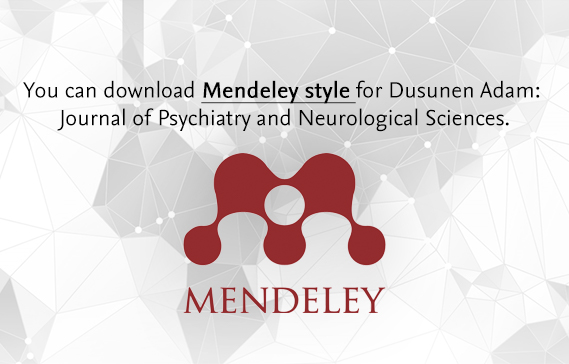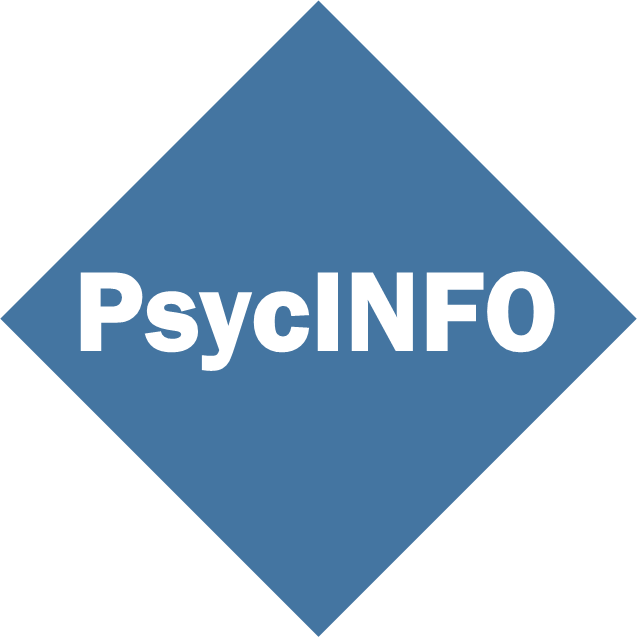INTRODUCTION
Huntington’s disease (HD); is an autosomal dominant neurodegenerative disorder which is presented with cognitive, motor and also psychiatric clinical features. It is seen 1/10.000 in population. It can occur at any age but its initiation is especially in third or fourth decades. In the early episodes of the disease involuntary movements like dancing (chorea) can be observed, in the late stages there begins akinesia and distonia. Decline in memory, learning and attention starts early and become more pronounced in time and subcortical dementia can occur. The molecular origin of the disease is the cytosine adenine guanine (CAG) trinucleotid increase in the Huntington’s gene which is located in forth chromosome’s short arm. It is thought that the main pathology comes from the loss of striatal and cortical projection neurons and the change in dopamine content and number of receptors cause the cognitive and movement impairment. Today the function of the protein “Huntington” and the pathological mechanisms that is induced by the mutant Huntington protein is not clear yet. Current treatment options are not enough to stop the progression of the disease. There is a little evidence that is found from the studies for pharmacological treatment of HD. In this article we present a case which we diagnosed HD after three years follow-up.
CASE
S.K. is a 28 years old, single woman who was graduated from university and lives with her family. From the story which was taken from her mother and brother her complaints were started four years ago. They were started with isolation at first, looking at the floor while talking and not making eye contacts, after that suspiciousness, skepticism, meaningless speech, sleeplessness, touchiness, in the direction of her thoughts, not eating food were added to her complaints. In psychiatric examination self-care was decreased, attention and concentration were impaired, thought flow was slowed, and in the history there were auditory and visual hallucinations, persecution and reference delusions, psychomotor slowness, irritable mood, affective shallowness. In the family history there was no psychiatric disorder. The patient was hospitalized with the diagnosis of “Psychotic Disorder” twice in the psychiatry clinic of state hospital. For investigating etiology of the diagnosis of first episode of psychosis routine biochemical, thyroid function, serum B12, folate levels, complete blood count tests, cranial computer tomography, electroensapholography were done in her first hospitalization, there was no pathology detected. Treatment of olanzapine was started with 10mg per day and it was increased to 20mg per day. With the continuation of the psychotic symptoms risperidone 2mg per day was added to her treatment. Risperidone was stopped because of the evolution of extrapyramidal side effects such as rigidity, bradykinesia. Three months after the cessation of risperidone with the exacerbation of psychotic symptoms she was hospitalized for the second time and her routine tests were repeated, there was no pathological result detected, for its lower risk of extrapyramidal side effects clozapine 25mg per day was started while olanzapine dosage was decreased to 10mg per day. With weekly monitoring of white blood cells in the third week of the treatment olanzapine was stopped, clozapine was increased to 300mg per day. The psychotic symptoms were disappeared. But in neurological examination dysmetria, gait disturbance, ataxia and tremor were found and because of the occurrence of disabling effects of them in process neurology consultation was asked and to rule out the other diagnoses brain magnetic resonance imaging (MRI) was requested. In the neurological examination consciousness was prone to falling asleep, speech was dysphasic, cranial nerve examination was normal, all of the motor muscle strength were 5/5, there were tremor, ataxia, dysmetria, impairment in coordination, finger-nose test and sequential movements, increase in the deep tendon reflexes of upper extremity. Cerebral atrophy and ventricular enlargement were found in the brain MRI. For further examination positron emission tomography (PET-CT) was taken and decrease in glucose metabolism in bilateral caudate nucleus and in the striatum was found and those results were concordant with the results of the studies about preclinic of Huntington’s disorder. By detailing the family history we found that she had relatives with HD in her father’s family and her father died at the age of 45. For further research and treatment the patient was directed to Pamukkale University, she was consultated by medical doctors from psychiatry and neurology department. In her neuropsychological tests in number sequences test for instant attention, in the tests which were about frontal function such as stroop, verbal memory processes and also in recording, recalling and storing duration were found to be impaired mildly. For ruling out Wilson’s disease blood seruloplasmine level was requested and it was found to be at the normal interval. The blood sample taken from the patient for genetic examination was sent to Genetic Department of Istanbul University and the examination revealed positive result for HD. Choreifrom involuntary movements in her upper body and extremity were added to her clinical presentation and the patient got 12 points in Abnormal Involuntary Movements Scale applied to her. The current treatment of the patient is clozapine 300mg per day and amitriptiline 25mg per day, now she does not have psychotic symptoms, but in process her involuntary movements, ataxia, dysphasia, dysmetria and cognitive failure did not change.
DISCUSSION
There were accompanying psychiatric symptoms in most of the cases reported with the diagnosis of HD. This case drew our attention because psychiatric symptoms were the patient’s first clinical signs three years before the occurrence of motor and cognitive symptoms and by suspecting from the results of PET-CT, the blood sample was taken from the patient and HD was diagnosed after three years.
HD is diagnosed with the family history, motor features in examination and genetic test. HD is a progressive disease which is accompanied by motor, cognitive and psychiatric symptoms. Prevalance of neuropsychiatric symptoms frequently reported in HD changes between 33-76% and these symptoms are depressive mood, anxiety, irritability and apathy. Obsessive compulsive features rate is 10-52% and psychosis rate is 3-11%. Mood disorders, behavior problems, psychotic features that accompany HD, and the antipsychotic drugs used in treatment are described below.
There are a few studies about HD and risperidone usage in literature but some case reports suggest that risperidone’s efficacy is equal to haloperidol (9,10). The results of one study usage of the oral form of risperidone and the other study which had chosen 5 patients who did not use oral forms and were started injection form of risperidone (25mg- twice in a month) show that (11). Fıstıkcı et al. (9) presented a HD diagnosed case with psychotic disorder and treatment resistant OCD who was being treated with long acting risperidone (37.5mg-twice in a month).
A 70 years-old patient’s hallucinations and paranoid delusions were added to the symptomatology after the diagnosis of HD. The patient was hospitalized in psychiatry clinic, after stopping all of his medications, clozapine was started at 25mg/per day dose and increased to 200mg/per day, at the same time the patient’s choreiform movements got better (12). A 47 years-old patient who did not get continuous treatment after the diagnosis HD was having trouble in walking. After the emergence of irritability, persecution delusions, intermittent violence behaviors aripiprazole 20 mg/per day was started for the patient’s treatment, and in two weeks there was an improvement in the patient’s psychotic symptoms while there was a decrease in choreiform movements. The patient was walking without support. The involuntary movements in HD may be related with dopaminergic system and aripiprazole’s partial agonism mechanism may be both effective in the decrease of psychotic symptoms and choreiform movements (13).
Forty seven years-old patient who was diagnosed as HD in his/her 43s, was started olanzapine 20mg/per day after making delusional explanations for his/her motor symptoms. The treatment continued for 6 months, there was an improvement in psychotic symptoms while the motor symptoms got worse. Then aripiprazole 15mg/per day treatment started for the patient and both the motor and psychotic symptoms got better. But there was no change in the mini mental test. In that case aripiprazole was thought to be acting like selective D2 ligand and while inhibiting excessive dopaminergic neurotransmission in mezolimbic region, it had no effect on nigrostriatal dopaminergic system which has a role in extrapyramidal side effects (1). In a 39 years-old patient who was presented as a case by Edlinger et al. (14), after the occurrence of psychosis and aggressive behaviors the patient was hospitalized in psychiatry clinic. With no response to olanzapine, risperidone and amisulpiride, aripiprazole was started to the patient. The patient’s compliance to the treatment was increased and there was an improvement in the aggressive behaviors and even the choreiform symptoms. Clozapine added to the patient’s treatment because there was no improvement in psychotic signs. That was beneficial for the psychotic symptoms and to improve the social functioning of the patient reboxetine was added. The treatment was effective for the patient and there was no need to the treatment of tetrabenazine. In a 60 years-old female patient who was diagnosed as affective disorder with psychotic features and hospitalized in psychiatry clinic, symptoms of dementia were started and showed a progressive increase and after the occurrence of movement impairments that were specific for the HD, she had the diagnosis of late presentation of HD. She had electroconvulsive treatment beside antidepressants and antipsychotics (15). Jardri et al. (16) presented a case with no history of neurological disorder which firstly showed psychiatric symptoms like our case-report. In that case the patient was 12 years old and was brought to the hospital for suicidal thoughts, aggressive behavior. Also the patient had a history of major depressive disorder without psychotic features a year ago and was treated with imipramine 10mg/per day. In another case-report, the patient got the diagnosis of HD 3 years after the psychosis diagnosis. The patient had wide mild cortical atrophy in brain MRI and the involuntary movements occurred after three years and with genetic test HD was diagnosed (17).
Shen (18) used lamotrigine and increased to 300mg/per day in a patient who had movement abnormality, depression, mood swings, repeatedly suicidal attempts with high risk and HD diagnosis. With the usage of lamotrigine there was an improvement in both mood and movement impairments. Alpay and Koroshetz (19) treated their 5 patients’ behavioral symptoms with quetiapine without causing impairments in movement symptoms. In chorea secondary to HD if the severity of the symptoms are mild and moderate there may be no need for treatment but in severe forms it is reported that there are some treatment options like amantadine and tetrabenazine (20).
Here we reported a case who had first psychotic symptoms and diagnosed as psychosis. She had EPS predisposition, in process cognitive and neurological symptoms occurred. We suspected HD from the results of PET-CT, then with the genetic testing HD diagnosis was confirmed. We mentioned about the case-reports and the strategy of the treatment in literature. In the future we think the case-reports and treatment studies will show us much more information about HD clinic appearance and antipsychotic treatment choices. We also think PET can be used for preclinical diagnosis of HD.
REFERENCES
1. Oulis P, Mourikis I, Konstantakopoulos G, Papageorgiou SG, Kouzoupis AV. Aripiprazole in the treatment of olanzapine-resistant psychotic and motor symptoms of Huntington’s disease. J Neuropsychiatry Clin Neurosci 2010; 22:352c.e4-352.e5.
2. Bonelli RM, Beal MF. Huntington’s disease. Handb Clin Neurol 2012; 106:507-526.
3. Roos RA. Huntington’s disease: a clinical review. Orphanet J Rare Dis 2010; 5:40.
4. Chen JY, Wang EA, Cepeda C, Levine MS. Dopamine imbalance in Huntington’s disease: a mechanism for the lack of behavioral flexibility. Front Neurosci 2013; 7:114.
5. Pavese N, Andrews TC, Brooks DJ, Ho AK, Rosser AE, Barker RA, Robbins TW, Sahakian BJ, Dunnett SB, Piccini P. Progressive striatal and cortical dopamine receptor dysfunction in Huntington’s disease: a PET study. Brain 2003; 126:1127-1135.
6. Paulsen JS. Cognitive impairment in Huntington disease: diagnosis and treatment. Curr Neurol Neurosci Rep 2011; 11:474-483.
7. van Dujin E, Kingma EM, van der Mast RC. Psychopathology in verified Huntington’s disease gene carriers. J Neuropsychiatry Clin Neurosci 2007; 19:441-448.
8. van Duijn E, Kingma EM, Timman R, Zitman FG, Tibben A, Roos RA, van der Mast RC. Cross-sectional study on prevalences of psychiatric disorders in mutation carriers of Huntington’s disease compared with mutation-negative first-degree relatives. J Clin Psychiatry 2008; 69:1804-1810.
9. Fistikci N, Saatcioglu O, Erten E, Yilmaz G, Calci C, Keyvan A. Treatment resistant obsessive compulsive disorder and psychosis due to Huntington’s disease. Marmara Medical Journal 2013; 26:105-107.
10. Erdemoglu AK, Boratav C. Risperidone in chorea and psychosis of Huntington’s disease. Eur J Neurol 2002; 9:182-183.
11. Johnston TG. Risperidone long-acting injection and Huntington’s disease: case series with significant psychiatric and behavioural symptoms. Int Clin Psychopharmacol 2011; 26:114-119.
12. Vallette N, Gosselin O, Kahn JP. Efficacy of clozapine in the course of Huntington chorea: apropos of a clinical case. Encephale 2001; 27:169-171.
13. Lin WC, Chou YH Aripiprazole effects on psychosis and chorea in a patient with Huntington’s disease. Am J Psychiatry 2008; 165:1207-1208.
14. Edlinger M, Seppi K, Fleischhacker W, Hofer A. Treatment of psychotic and behavioral symptoms with clozapine, aripiprazole and reboksetine in a patient with Huntington’s disease. Int Clin Psychopharmacol 2013; 28:214-216.
15. Rittmannsberger H, Gebetsberger B, Pichler R, Rotaru J, Trattmayr N, Zaunmüller T. A case of affective disorder with psychotic symptoms as late manifestation of Huntington’s Chorea. Psychiatr Prax 2011; 38:306-308.
16. Jardri R, Medjkane F, Cuisset JM, Vallee L, Delion P, Goeb JL. Huntington’s disease presenting as a depressive disorder with psychotic features. J Am Acad Child Adolesc Psychiatry 2007; 46:307-308.
17. Chuo YP, Hou PH, Chan CH, Lin CC, Liao YC. Juvenile Huntington’s disease presenting as difficult-to-treat seizure and the first episode of psychosis. Gen Hosp Psychiatry 2012; 34:436.e9-11.
18. Shen YC. Lamotrigine in motor and mood symptoms of Huntington’s disease. World J Biol Psychiatry 2008; 9:147-149.
19. Alpay M, Koroshetz WJ. Quetiapine in the treatment of behavioral disturbances in patients with Huntington’s disease. Psychosomatics 2006; 47:70-72.
20. Singer C. Comprehensive treatment of Huntington’s disease and other choreic disorders. Cleve Clin J Med 2012; 79 (Suppl 2):30-34.

























